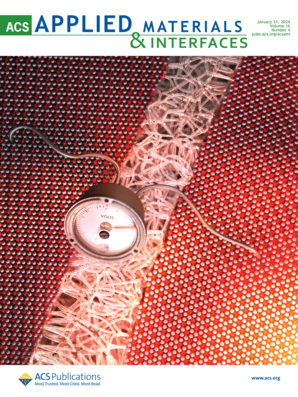Structural Reconstruction of Lignocellulose toward Hard Carbons for Optimized Sodium-Ion Storage.
IF 8.3
2区 材料科学
Q1 MATERIALS SCIENCE, MULTIDISCIPLINARY
引用次数: 0
Abstract
Lignocellulose-derived hard carbon has emerged as a promising anode material for commercializing sodium-ion batteries owing to the abundance and the relatively low cost of the raw materials. However, hard carbons derived from the direct carbonization of lignocellulose usually exhibit small pore volumes, which leads to low capacity and poor rate capability. Current studies have provided a limited understanding of the structural evolution mechanism of single-component and intercomponent interactions that determine the closed pore and crystalline structure of hard carbon derived from lignocellulose. Additionally, the correlations between the closed pore structure and the sodium-ion storage capabilities in hard carbons need to be better established. Herein, we have developed an effective process to prepare hard carbons derived from lignocellulose for enhanced sodium-ion storage. Specifically, we demonstrate an effective reconstruction strategy where a high closed-pore volume (0.23 cm3 g-1) and small closed-pore sizes (1.80 nm) were simultaneously achieved, resulting in excellent electrochemical sodium-ion storage performance. The lignocellulose-derived hard carbon thus exhibits high capacities of 350 mA g-1 at 50 mA g-1 and 236 mAh g-1 at 5000 mA g-1. This study provides both mechanistic understanding and practical strategies for modulating the microstructures of a lignocellulose precursor to design high-performance hard carbon anodes.木质纤维素对硬碳的结构重建及其优化钠离子储存。
木质纤维素衍生的硬碳由于其丰富且成本相对较低,已成为一种很有前景的商业化钠离子电池负极材料。而由木质纤维素直接炭化而成的硬碳通常孔隙体积小,导致容量低,速率能力差。目前的研究对木质纤维素衍生硬碳的单组分和组分间相互作用的结构演化机制了解有限,这些相互作用决定了木质纤维素衍生硬碳的闭孔和结晶结构。此外,需要更好地确定硬碳中闭孔结构与钠离子存储能力之间的相关性。在此,我们开发了一种有效的方法来制备源自木质纤维素的硬碳,以增强钠离子的储存。具体来说,我们展示了一种有效的重建策略,可以同时实现高闭孔体积(0.23 cm3 g-1)和小闭孔尺寸(1.80 nm),从而获得优异的电化学钠离子存储性能。因此,木质纤维素衍生的硬碳在50 mA g-1和5000 mA g-1时表现出350 mA g-1和236 mAh g-1的高容量。本研究为调节木质纤维素前体的微观结构以设计高性能硬碳阳极提供了机理理解和实用策略。
本文章由计算机程序翻译,如有差异,请以英文原文为准。
求助全文
约1分钟内获得全文
求助全文
来源期刊

ACS Applied Materials & Interfaces
工程技术-材料科学:综合
CiteScore
16.00
自引率
6.30%
发文量
4978
审稿时长
1.8 months
期刊介绍:
ACS Applied Materials & Interfaces is a leading interdisciplinary journal that brings together chemists, engineers, physicists, and biologists to explore the development and utilization of newly-discovered materials and interfacial processes for specific applications. Our journal has experienced remarkable growth since its establishment in 2009, both in terms of the number of articles published and the impact of the research showcased. We are proud to foster a truly global community, with the majority of published articles originating from outside the United States, reflecting the rapid growth of applied research worldwide.
 求助内容:
求助内容: 应助结果提醒方式:
应助结果提醒方式:


